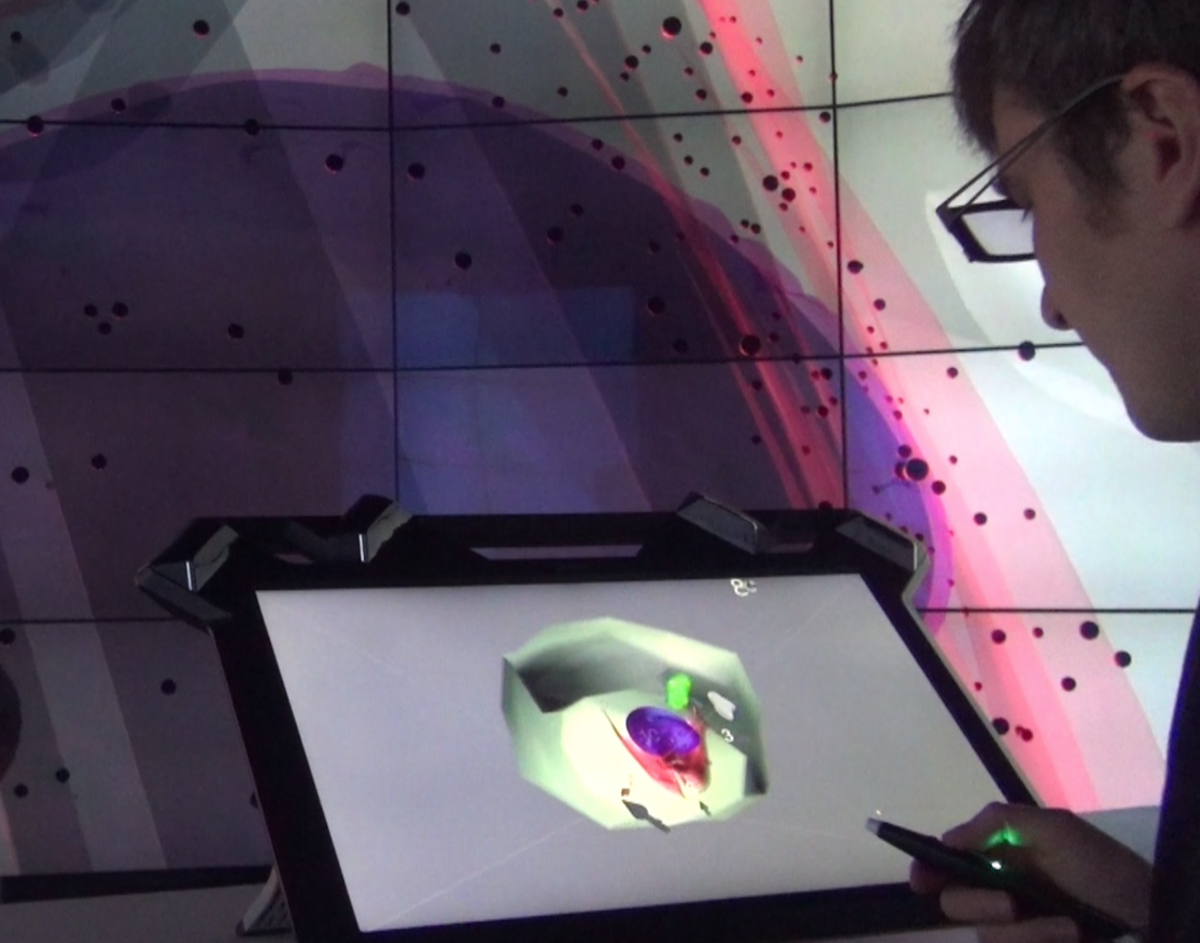Immersive Analytics

Immersive Analytics (IA) is an emerging new field of research that studies methods and technologies facilitating a deep cognitive, perceptual and/or emotional involvement of humans when understanding and reasoning with data. Immersive technologies are commonly defined as technologies aiming at blurring the line between physical and virtual worlds, by employing multimodal input and multi-sensory output to create a state of immersion, i.e. a deep mental involvement of a person into an activity and/or an intense concentration or complete absorption into the activity that one does.
The Immersive Analytics initiative was started in 2014 by Kim Marriott (group page) and Falk Schreiber (group page), taking advantage of specific research infrastructure at Monash University such as the CAVE2. Together with an international team of researchers working on immersive analytics-related aspects a Shonan seminar and a Dagstuhl seminar for this new research topic were initiated; and we published a book (with Springer) defining and exploring the field of immersive analytics (see below).
Key publications
• T. Chandler, M. Cordeil, T. Czauderna, T. Dwyer, J. Glowacki, C. Goncu, M. Klapperstück, K. Klein, K. Marriott, F. Schreiber and E. Wilson: ‘Immersive Analytics’ (Proc. IEEE Big Data Visual Analytics - BDVA) 73-80, 2015.
• B. Sommer, D. G. Barnes, S. Boyd, T. Chandler, M. Cordeil, T. Czauderna, M. Klapperstück, K. Klein, T. D. Nguyen, H. Nim, K. Stephens, D. Vohl, S. Wang, E. Wilson, Y. Zhu, J. Li, J. McCormack, K. Mariott, and F. Schreiber: ‘3D-stereoscopic immersive analytics projects at Monash University and University of Konstanz’ (Proc. IS&T Electronic Imaging - Stereoscopic Displays and Applications XXVIII) Electronic Imaging 5, 179-187, 2017.
• K. Marriott, F. Schreiber, T. Dwyer, K. Klein, N. Riche, T. Itoh, W. Stuerzlinger, B. Thomas and U. Woessner: ‘Immersive Analytics’ Springer LNCS 11190, 366 pages, 2018.
